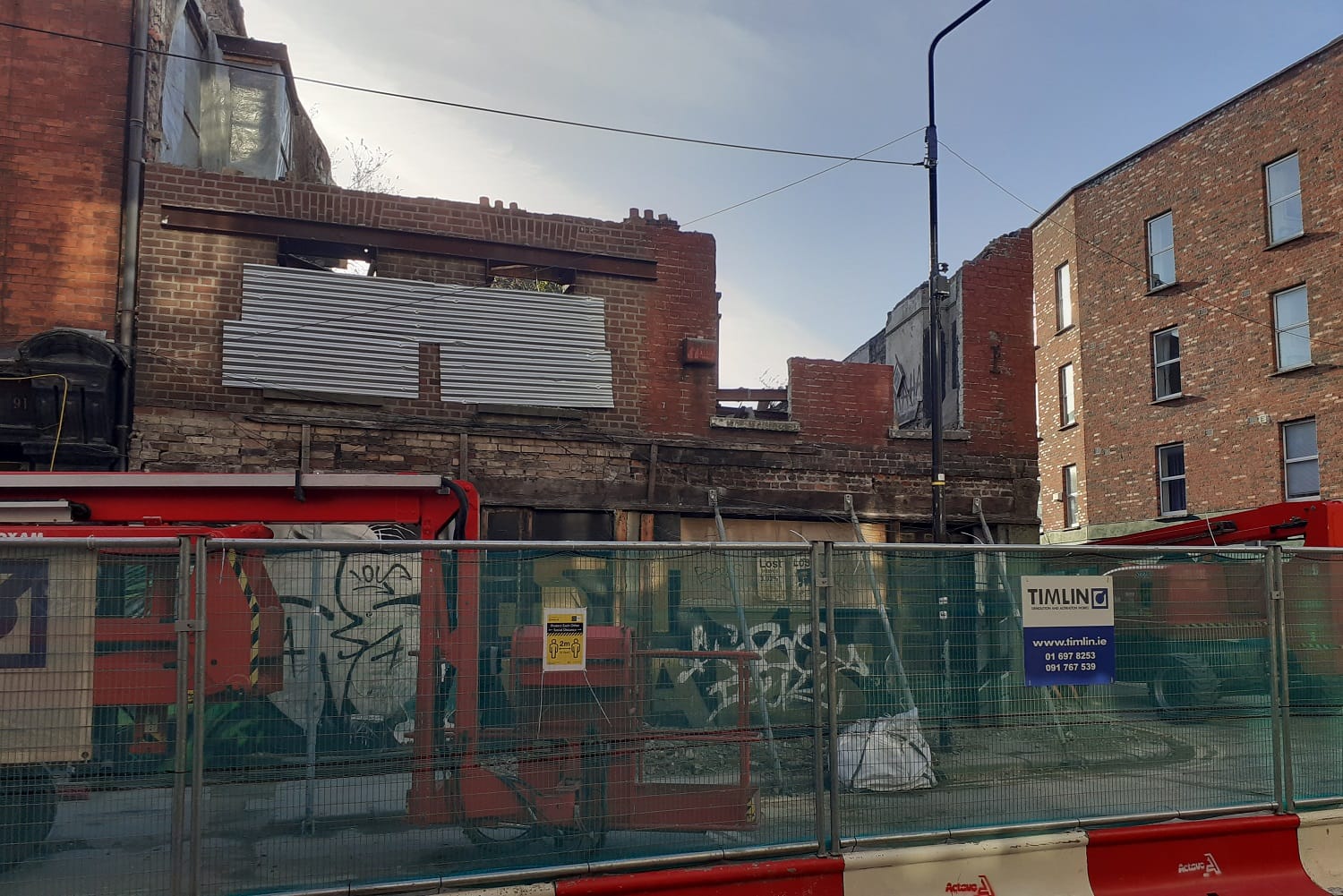Nobody caught illegally dumping yet by new north inner-city CCTV
But the scheme is a success, said a council official's report, as that shows the cameras are a deterrent.
The council also refused the owner’s request to demolish the existing structure on the site at 92/93 Francis Street, but on Tuesday it was being torn down.

Dublin City Council has refused permission to tear down a derelict building at 92 and 93 Francis Street in Dublin 8 and replace it with an aparthotel.
“The proposed development would exacerbate the existing overconcentration of hotel developments and prevent the delivery of residential development,” the council planner’s report said.
Despite the refusal of the owner’s request to demolish the existing building, on Monday and Tuesday of this week crews were tearing it down.
Dublin City Council hasn’t yet responded to queries sent Monday evening about why it was allowing the building to be torn down if the council had refused the owner’s application to do so. (The council later responded, and we published a follow-up story here.)
There are already 907 hotel rooms within about 500 metres of the site, and planning applications for a further 882 rooms have been “consented”, according to the council planner’s report.
“It is considered that residential development in the area has not kept pace with hotel developments,” the planner’s report says.
The council has not yet responded to a query about the exact methodology used to determine there was an overconcentration of hotels in the area – how many hotels in what sized area is considered an overconcentration.
In addition to the concentration of hotels in the area, local councillors have in the past voiced frustration at the concentration of student housing. In 2019, there were 16 approved applications for student housing within about 1 kilometre of Newmarket.
There’s also the issue of co-living. A proposal for a co-living complex near Fumbally Lane was met with opposition from local residents and councillors.
In late 2019, a group of local councillors from a range of political parties worked together against a plan to build a development including a 69-room co-living complex and a 144-bed hotel on New Row South. The council approved it in 2020.
The existing building at 92/93 Francis Street was once the Barley Mow pub, but has been vacant and crumbling for years. It’s now perhaps best identified by the big mural of Yoda and the words “Stop Wars”.
In 2004, someone named Eamon Walsh proposed demolishing the building and replacing it with a five-storey apartment building with 23 apartments – 18 two-beds and 5 one-beds. The council turned down this plan, though, because at the time it was a protected structure.
Plunkett Homes Ltd, a company created in 2015 and owned, according to company documents, by an engineer from Bettystown, Co. Meath, named Gary Plunkett, was behind the more recent plan to build the aparthotel.
Through their architect, studio dsq, they proposed a four-storey-plus-penthouse, 19-bedroom aparthotel, with a “cafe/community space” on the ground floor. “The buildings are beyond the point of repair and need to be removed to enable effective regeneration,” the architect’s report says.
However, the council planner’s report says that “While no longer a Protected Structure the building is located within the boundary of the Thomas Street and Environs Architectural Conservation Area.”
So a second reason – in addition to overconcentration – for refusing Plunkett’s proposal was that the council didn’t want the existing building demolished.
“It is considered that the existing historic facades of the building should be retained or reconstructed in order to preserve the character of the Architectural Conservation Area,” the planner’s report says.
True, the council issued “a dangerous building notice” in January 2021, “following a complaint regarding fallen debris”. That notice required the applicant to make the building safe within 28 days – although, the report notes, by 2 March “no repairs works, clearing out or further bracing for the facades have been undertaken”.
Still, “the instruction is in no way to be deemed or implied demolition or partial demolition arrangement and that planning permission is required for any demolition works to the building”, the planner’s report says. Any repairs to the building should ensure that the facades are protected and retained, it says.
Neither architects studio dsq nor Plunkett Homes’ company secretary Claude Scully responded before publication to queries sent Monday and Tuesday about why, then, the building – including its facades – was being torn down.
The council has already put some effort into retaining them, according to a submission from An Taisce, opposing the proposed demolition.
“The Conservation section of Dublin City Council undertook works to the buildings – which had been vacant for years and suffered fire damage – approximately a decade ago comprising internal demolition and securing of the historic external elevations to the street,” An Taisce’s report says.
Plunkett’s proposed “rejuvenation is welcome in principle”, but An Taisce would “prefer to see the existing historic brick street elevations – particularly the red-brick Georgian corner building at 93 – retained and incorporated within the new development”, its submission says.
The top floors are now gone.
Company secretary Claude Scully did not reply to a query as to whether Plunkett Homes planned to submit a new planning application for the site, and how it might be different to the one for the aparthotel that the council recently rejected.
